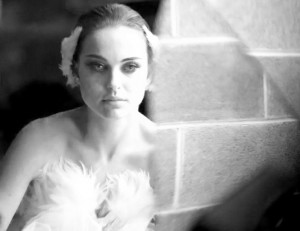
As the semester winds down and work class ramps up, if you are anything like me, you may begin to teeter on the brink of a stress-induced psychosis. If you feel that a meltdown is imminent, detach yourself from your studies for a couple hours this weekend and check out Black Swan. It will give you a true appreciation of your sanity, while hopefully leaving you only slightly rattled.
Black Swan, released Dec. 17, 2010, is only the fifth major work of Director Darren Aronofsky. However, Aronofsky boasts such celebrated works as the cult favorite Requiem for a Dream (2000) and the critically acclaimed The Wrestler (2008). Arononfsky’s brief career has been marked by strong characters and twisting plots. Black Swan is no exception.
Black Swan is anchored in the realm of ballet. Sound kind of lame? Don’t let the tutus and slippers fool you: this world is terribly cutthroat. The action of Black Swan focuses on Nina Sayers, a performer in a prominent New York ballet company who prides herself on impeccable technique and dedication to production. Nina is portrayed by Natalie Portman, who won the Oscar for Best Actress for her performance. When offered the lead in the company’s upcoming production of Tchaikovsky’s Swan Lake, Nina is jubilant. Her appointment to this role is contingent on her ability to throw her typical caution to the wind and dance the role of the sultry Black Swan as well as the pristine Swan Queen. This is clearly a breach of character for the innocent ballerina. Enter Mila Kunis as Nina’s understudy, Lily. Lily is new to the company and appears tailor-made to play the wild, sensual Black Swan. This rivalry begins to seriously unhinge Nina, whose darker side has already been hinted at.
The mind-bending tone of Black Swan is expertly crafted by Aronofsky. Nina certainly warrants some couch time with Dr. Freud. Obsessive-compulsive disorder, paranoia and fits of delusion only begin to construct her psychological profile. Yet, Nina is not the only character who contributes to the unsettling nature of this story. The film has an undeniably creepy quality to it. The cadre of unbalanced characters includes a dancer past her prime and paranoid of the young up-and-comers, the show’s director (Vincent Cassel, Ocean’s Twelve, Ocean’s Thirteen) clearly abuses his power over his dancers and Lily’s motives seem questionable to say the least. There is even a mother whose involvement in her daughter’s life would be a psychoanalyst’s dream.
Black Swan was released surrounded by a rather healthy amount of anticipation and controversy. It was not uncommon to hear comments such as, “What an awesome movie! Just don’t see it with your parents.” While it is true that there are moments of sensuality, the erotic tone of the film was vastly overblown. Rather, Aronofsky focuses on Nina’s frequent breaks with reality. These sequences are incredibly enthralling and will leave the viewer questioning the boundary between truth and delusion. The hallucinations build in intensity and become increasingly more difficult to distinguish, drawing the viewer into the world Nina’s paranoia has created. Aronofsky deals with the subject of the evil double masterfully. Portman and Kunis are depicted as strikingly similar, and their polarized personalities certainly seem unable to coexist. The Nina/Lily struggle stands parallel to the fear of over-the-hill Beth (Winona Ryder) who is, herself, being phased out by Nina. The cycle of paranoia seems never-ending.
Regardless of all the complex psychoses which give Black Swan its depth, there also exists a real treat on a more sensory level. The backdrop of a large company production of one of ballet’s most iconic works lends the film the ability to draw on some epic orchestral pieces and truly exquisite expressions of the art of dance.
Ballet is a medium which I am unacquainted with, but I could not help but admire the strength and grace of the dancers depicted in the film. Portman and Kunis are reported as having spent six months in training for the dance sequences.
While the end of the year can be an exceptionally stressful and hectic time, Black Swan reminds us that life could indeed be more stressful. You could be a ballerina. The excellent plot and superb direction make it clear why Black Swan was one of the most heavily nominated films of 2010. I give it 4.5 out of 5 stars.